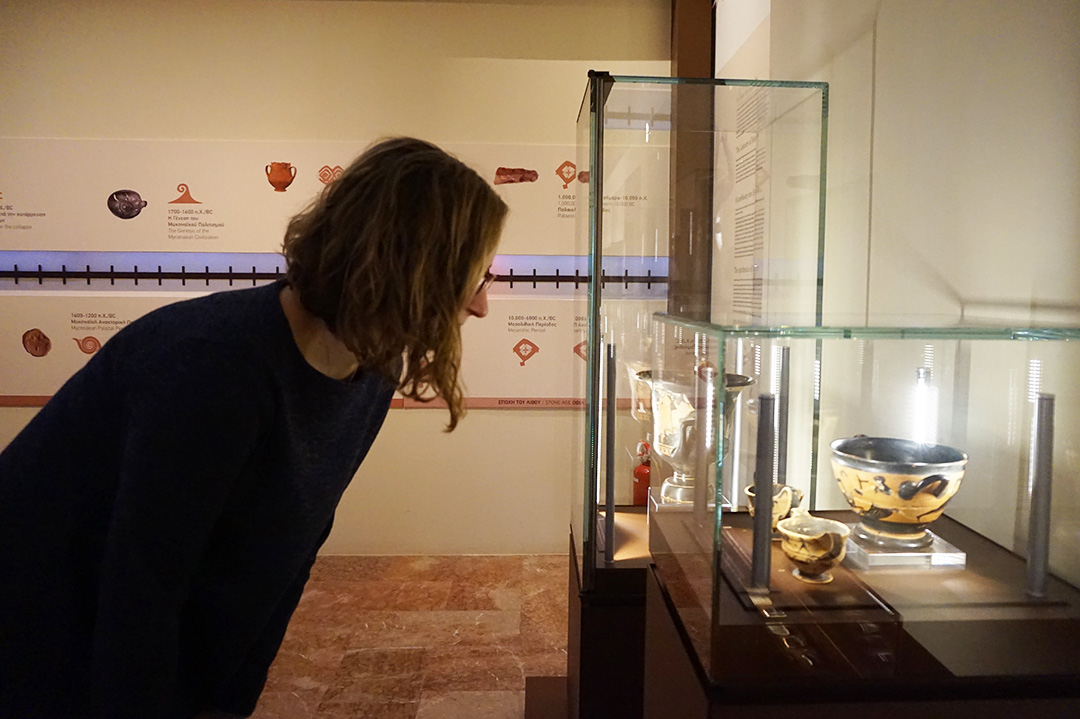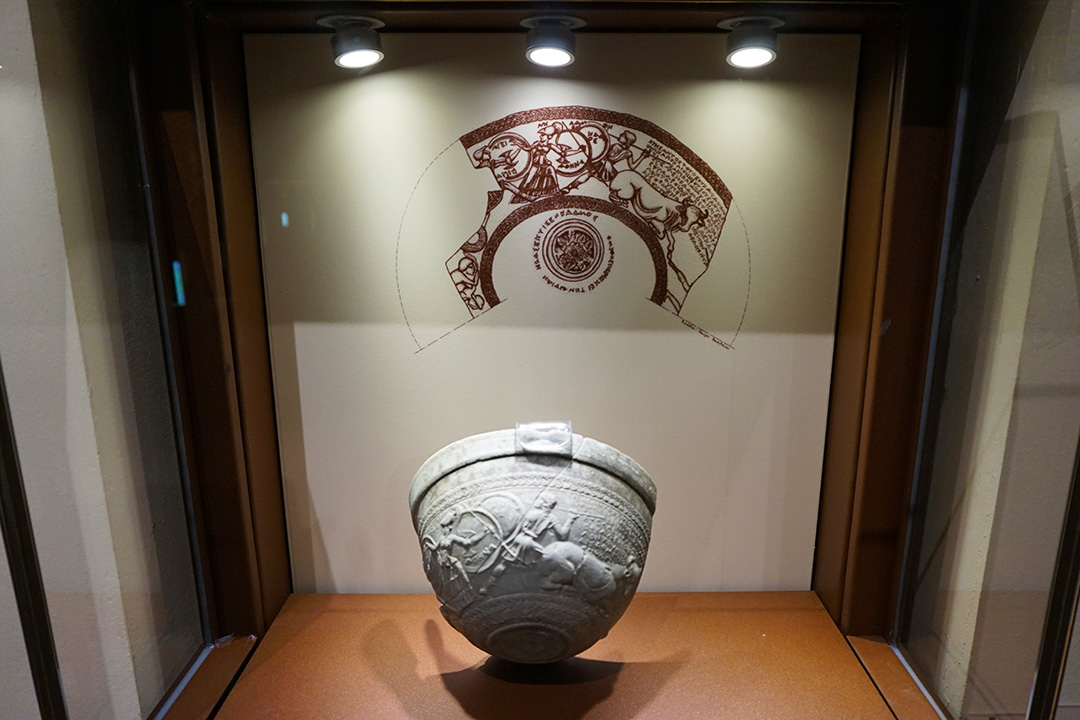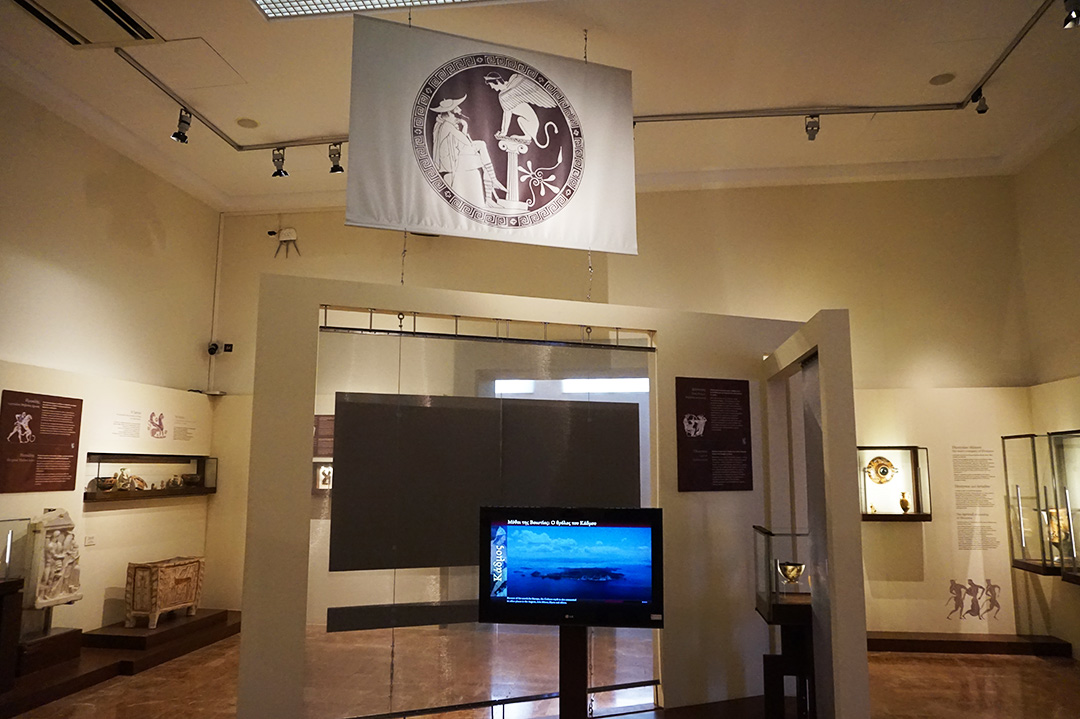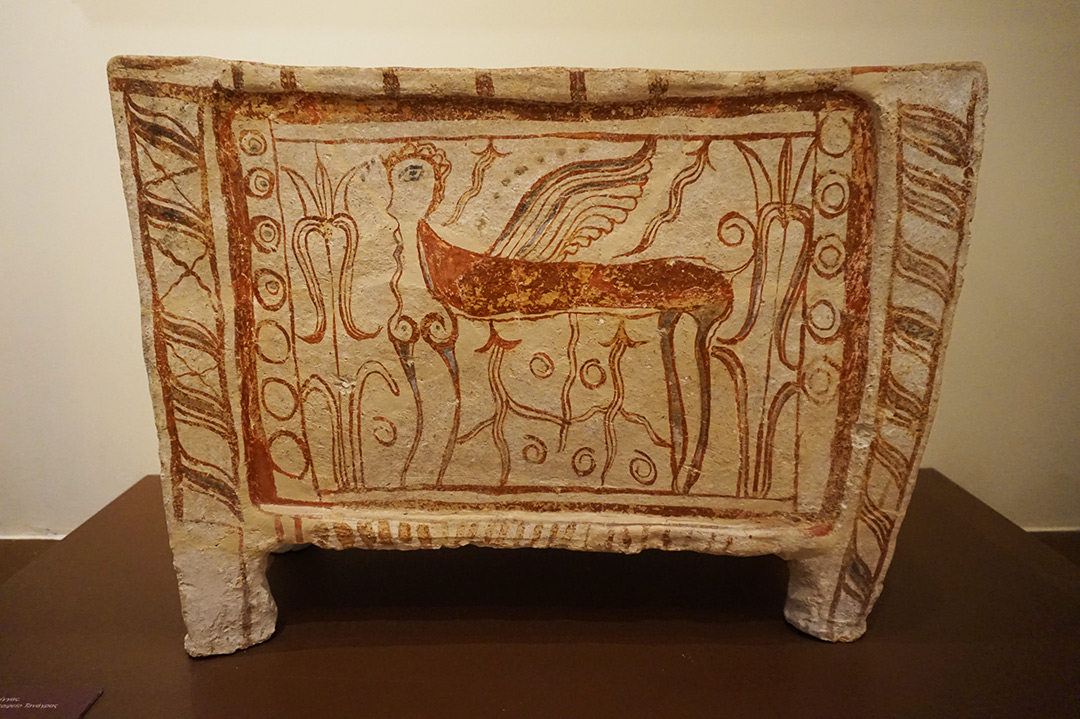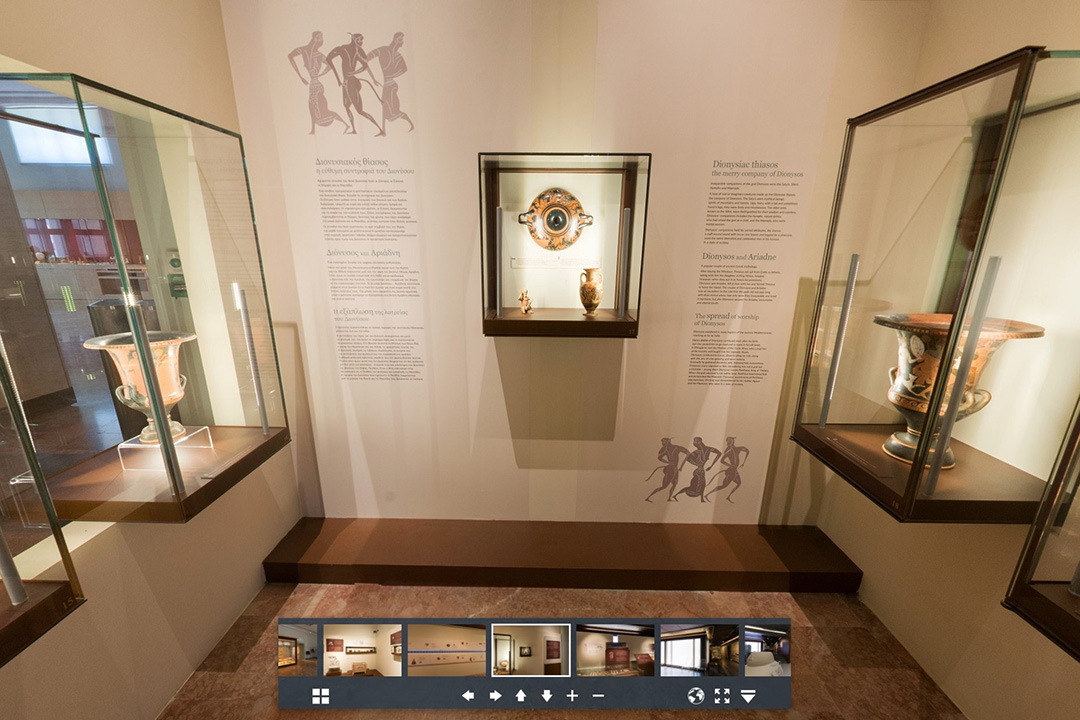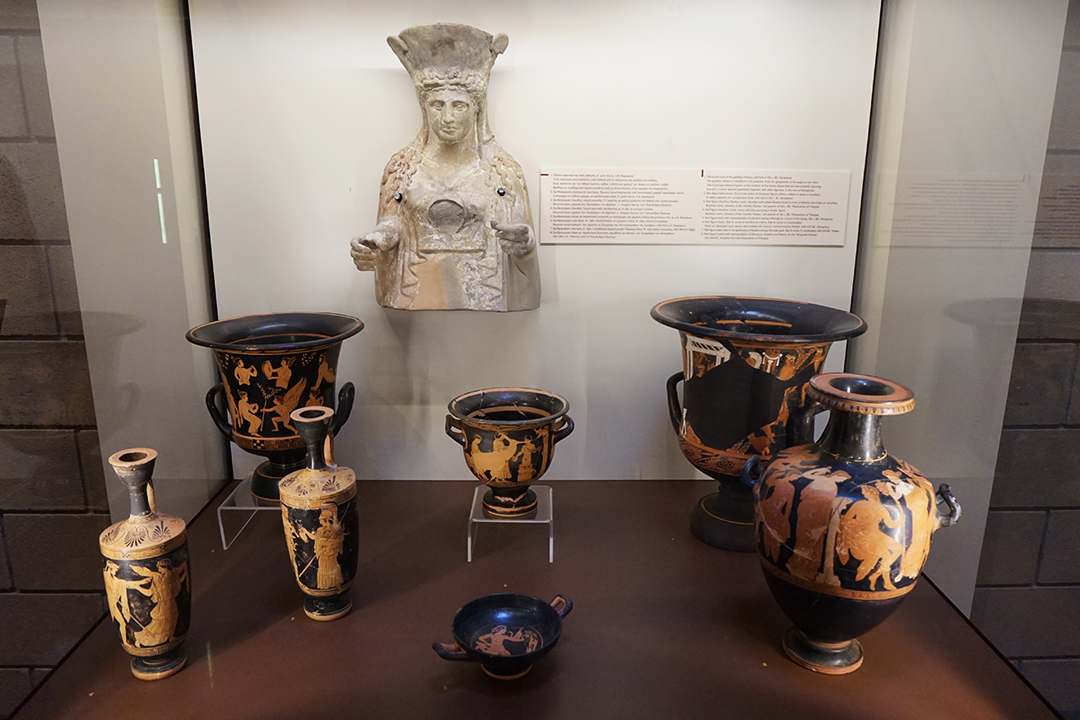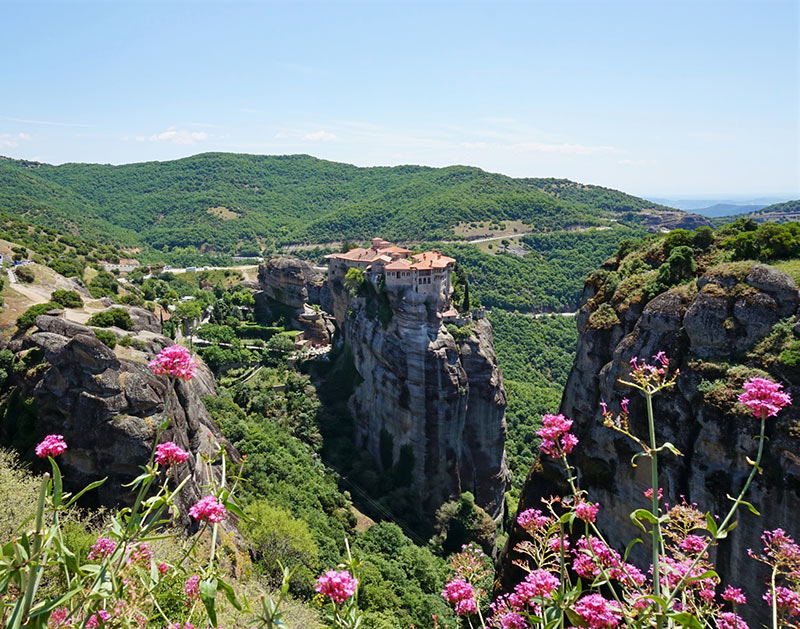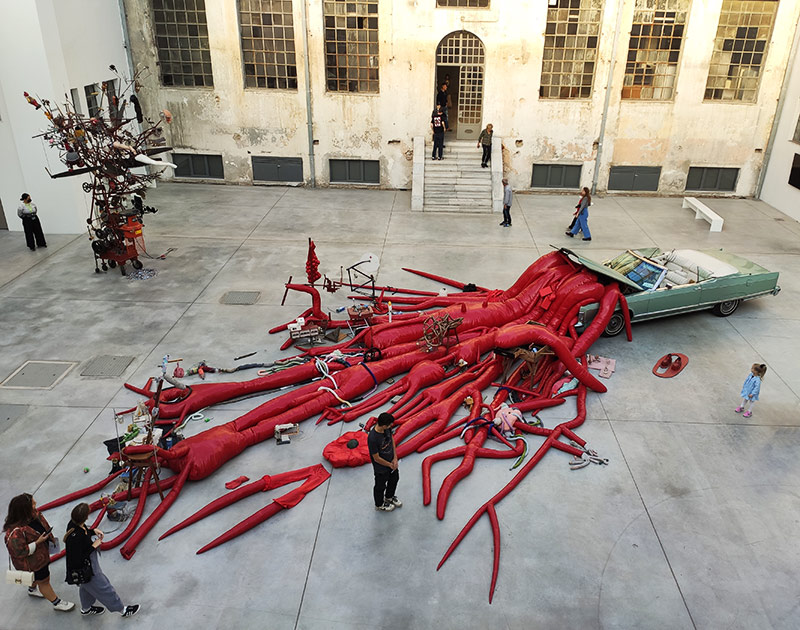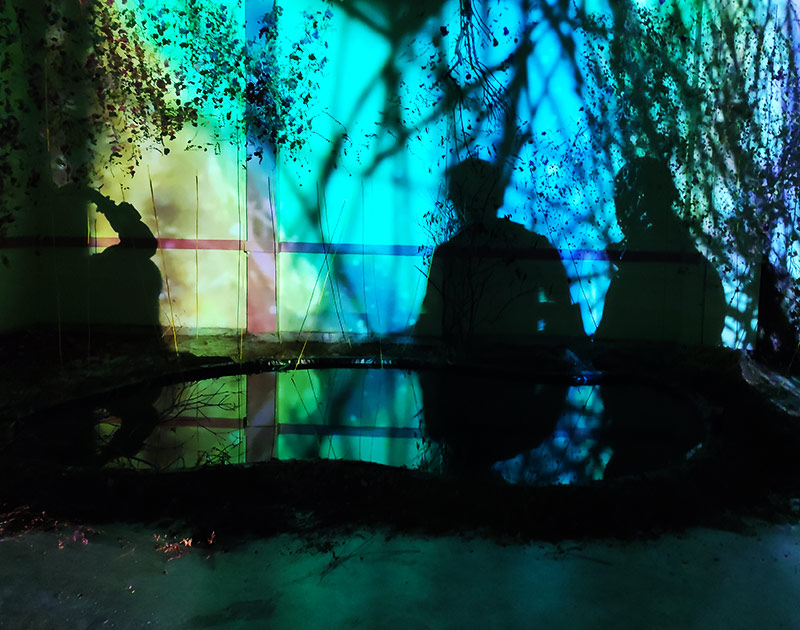Sofia Ps.
Myths in the Museum of Thebes
Thebes (Thiva in Greek), a city with a very important ancient past, is located in the area of Boeotia, the cradle of many famous Greek myths. A brilliant way to learn more about these fascinating stories from Greek mythology is to visit the Archaeological Museum of Thebes.
The museum itself is incredible and I’ll write more about it in a future post. But for now, let’s just talk about those stories!
Cadmus
Once upon a time, in the era of myths and legends, a Phoenician princess called Europa was abducted by the Greek god Zeus, disguised as a white bull. She was brought to Europe, the continent that was named after her. Europa’s family sent out her brother, Cadmus, to search for her and bring her back. The Phoenician prince couldn’t find her, so he went to the Oracle of Delphi for advice. The Oracle told him to abandon his quest and follow his destiny instead (well, technically she told him to follow a special cow, but you get the point). Cadmus followed the cow, which led him to a place where he was supposed to found a new city. This place was Thebes, and a great city it became indeed.
However, the area was guarded by a fierce dragon, who killed the hero’s friends. Cadmus managed to slay the dragon and then he sowed the dragon’s teeth in the ground. From those sprang a race of men, the ancestors of the noble families of Thebes. So, Cadmus, known as Kadmos (GR: Κάδμος) in Greek, became the founder and the first king of Thebes. He married Harmonia (lit. harmony) and I wish I could say that they lived happily ever after. However, if you know anything about Greek mythology, you’d know that trouble and suffering were the fate of many Theban kings.
Oedipus
Speaking of tragic heroes… Oedipus, a king coming from the line of Cadmus, is the most well know Theban hero, and probably the most unfortunate. The story of Oedipus starts with a curse. His father, King Laius, displeased the gods and that caused all sorts of problems for his royal family. At the beginning of our story, king Laius, childless at the time, was at the Oracle of Delphi for consul, where he received a terrible prophecy. The Oracle said that if he ever had a son, he would murder him, marry his own mother and bring misfortune and destruction to his house. Nonetheless, king Laius and queen Jocasta had a child. However, in order to thwart the prophesy, when the child was born, they tied him and left him to die in the mountains. As luck would have it, some shepherds found him and rescued him. His little feet were swollen by the injuries and they named him Oedipus (In Greek, “Οιδίπους” means swollen foot).
The shepherds gave him to the king and queen of Corinth who had no children, so Oedipus was raised as a prince. When he grew up, he heard he was adopted, so he went to the Oracle to ask for advice. The Oracle told him the same prophesy she has told his biological father all those years ago. Oedipus kind of freaked out (wouldn’t you?); he decided never to return to Corinth, so he wouldn’t kill his father etc. Instead, he travelled to Thebes… (Do you see where this is going?)
On the way there, he had a heated argument with an old man and in the end, Oedipus killed him. Thus, without even knowing it, he fulfilled the first part of the prophesy, because this old man happened to be King Laius. After this, Oedipus continued his journey to Thebes where he encountered the Sphinx, a dangerous creature which devoured travellers who couldn’t answer her riddles. Long story short, Oedipus defeated the Sphinx and the grateful citizens of Thebes gave him the hand of the -recently widowed- queen in marriage. So, again without having any idea what he was actually doing, Oedipus married his mother Jocasta and they did NOT live happily ever after. Of course, they didn’t… ew. The tragic story of Oedipus and his family has an even more tragic ending, but that’s another story for another time.
Sphinx
I think the Sphinx deserves to be mentioned as well because she was so cool! So, the Sphinx was a mythical creature with the head of a woman, the body of a lion, and the wings of an eagle. The Sphinx of Thebes, according to Greek mythology, was guarding the city by asking the travellers riddles. If they couldn’t find the right answer, she would kill them (kind of reminds me of the “Riddles in the dark” chapter in The Hobbit). When Oedipus wanted to enter Thebes, he too was asked to answer the Sphinx’s question. There are several different versions of the actual riddles, but they went something like this:
Which creature walks on four feet in the morning, on two feet at noon, and on three feet in the evening?
Oedipus knew the answer, and I’m sure you do too. It’s a human being, who crawls on all four as a baby, walks on two feet as an adult, and needs a walking stick when he’s old. Then, the Sphinx asked her second riddle.
There are two sisters. The first gives birth to the second, and then the second gives birth to the first. Who are those sisters?
Oedipus once again answered correctly; the two sisters are day and night (in Greek it makes more sense because both nouns are female). And just now I’m starting to notice that none of the stories so far have a happy ending. Well, in this case, it was happy for Oedipus, but less happy for the Sphinx because she was destroyed; killed according to some versions.
Dionysus
So, let’s change that and talk about something happier! And there’s nothing happier and merrier in Greek mythology than Dionysus, god of wine and parties and theatre. The stories about Dionysus’s adventures and his worship by the Greeks could fill many, many posts. So, for now, let’s just focus on his connection to Thebes. In order to do that, we’ll go back in time, before Dionysus was born (I l-o-v-e origin stories!).
Remember Cadmus and Harmonia, the first king and queen of Thebes? Well, Zeus fell in love with their youngest daughter, called Semele. They became lovers, but Hera, the wife of Zeus, was jealous and angry. Hera wanted to punish Semele, so she visited her in disguise planning to trick her. She earned her trust and advised her to ask Zeus to reveal himself in all his glory, in order to know that he’s not lying and he’s actually a god. Poor Semele did exactly that. She asked Zeus for a favour and he promised on the river Styx to grant her anything she wanted. Not being able to break this promise, Zeus in the end revealed himself and Semele died instantly by lightning (don’t try seeing a living god at home!).
Semele at the time was six months pregnant, and the child survived because he was the son of a god. Zeus took the fetal Dionysus and sewed him into his thigh. After three months Dionysus was born (again) to Zeus, who took the infant and sent it to be raised away from Greece, so he would be safe from Hera. In the end, the god Dionysus returned and took his place as one of the gods of Olympus. Fun fact, as a god he later went to the Underworld, brought his mother back from the dead and made her a goddess as well.
Hercules
Yes. You’ve probably heard of Hercules, right? Known as Heracles (GR: Ηρακλής) in Greek, he’s a popular figure today, and he was even more popular in ancient times. Son of Zeus, a god, and Alcmene, a mortal; Hercules was a demi-god and became an immortal god after living a very full, adventurous, and glorious life. Hercules is closely connected to Thebes, as he was born and raised in this city. According to Greek mythology, Zeus fell in love with Alcmene (yes, Greek mythology would be shorter if Zeus wasn’t sleeping around…). Was she married; you ask? Yes, she was. Was this a problem for Zeus; you ask? No, it wasn’t. Zeus disguised himself as her husband and tricked her into sleeping with him.
Amphitryon, her actual husband, was not pleased with the whole situation, but you can’t really fight Zeus. So, in the end, he accepted the child as his own and became the foster-father of Hercules. The people of Thebes always remembered this story and they were proud of the hero’s birthplace. In fact, they preserved the ruins of a house near Elektrai Gates, where they believed Hercules had been born.
For more information visit the website of the Archaeological Museum of Thebes, where you can also take a 360˚ virtual tour of the permanent exhibitions, watch videos, check out 3D models of objects, and read through the book guide of the museum.
If you’re interested in museums, read more about Greek Museums you can [virtually] visit.

